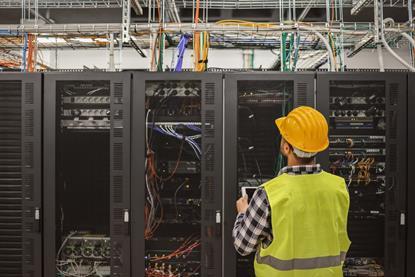Content (217)
-
White papers
From alternative to essential: The expanding role of private market investing
Not long ago, private markets sat on the fringes of most portfolios – niche strategies used to pick up extra yield around the edges of traditional portfolios. That’s no longer the case. Over the past two decades, private markets have moved steadily into the mainstream, propelled by strong performance relative to public markets, a broader opportunity set, and greater accessibility for investors of all sizes. What was once considered an alternative is now becoming essential.
-
White papers
Principal Well-Being Index: AI’s effect on staffing
The latest survey of 1,000 small and medium businesses shows that AI adoption has not resulted in planned staffing or wage cuts — instead, most firms expect AI to drive growth, with upskilling and retraining rather than layoffs being the likely outcome.
-
White papers
The investment landscape of data centers: opportunities and challenges
The digital age has ushered in a paradigm shift in how businesses operate and individuals engage with technology. Data centers play a central role in this transformation and have emerged as critical infrastructure for the modern economy. For investors, the story today revolves around a simple tension: accelerating demand versus constrained supply. Exploring the investment opportunities for data centers, the factors driving demand, the sector’s challenges, and the European market’s unique positioning reveals a complex yet promising landscape.
-
White papers
U.S. power market in a period of unprecedented growth and transformation
Following nearly two decades of stagnation, power demand is now surging, with an average annual growth rate of over 1% between 2021 and 2024, and approximately 3% growth in 2024 alone. Current long-term growth expectations range from 2% to well above 3% per year; by some measures, the U.S. is expected to add the equivalent power demand of New York over the next five years.
-
White papers
Europe’s AI challenges and opportunities
While Europe registers strength in AI research and patents, its limited funding, regulatory burden and energy-infrastructure constraints hinder the commercial scaling of AI — putting its markets at a disadvantage versus U.S. peers, though selective opportunities remain in sectors positioned for AI-infrastructure growth.
-
Video
Why should investors consider private credit in today’s market?
Middle market direct lending offers a compelling opportunity in today’s market — combining attractive yield, downside protection, and real portfolio diversification.
-
White papers
Navigate today’s markets for tomorrow’s outcomes
Amid economic and demographic shifts, investors are encouraged to stay focused on long-term goals, using diversified portfolios and disciplined retirement strategies to navigate short-term volatility and build future resilience.
-
White papers
Understanding Europe’s lag in the AI-led equity landscape
Despite substantial AI research output, Europe’s equities underperform because the region struggles with converting innovation into profitable, scalable AI businesses — structural obstacles like regulation, insufficient funding, and weak infrastructure suppress the growth potential of AI-led companies.
-
White papers
Fixed income: Opportunity amid global divergence
Opportunity amid global divergence: Amid global policy divergence and persistent macro uncertainty, fixed income markets are entering a new phase of elevated yields, resilient fundamentals and wider dispersion—making active management and selective credit positioning key.
-
White papers
U.S.-China trade tensions: From complacency to concern
From complacency to concern: Recent escalations in tariffs and export controls between the U.S. and China have jolted market complacency, bringing trade risk back into focus as a potential headwind for growth and tech-heavy portfolios.
-
White papers
U.S. equities: A constructive setup for 2026
With rate cuts likely in a non-recessionary environment and strong tech momentum, U.S. equity markets appear well-positioned for further gains into 2026.
-
White papers
AI, cloud computing see data markets mature
Principal Asset Management’s Matt Hackman and Sebastian Dooley see data centres emerge as in-demand asset as a matter of function and investment
















